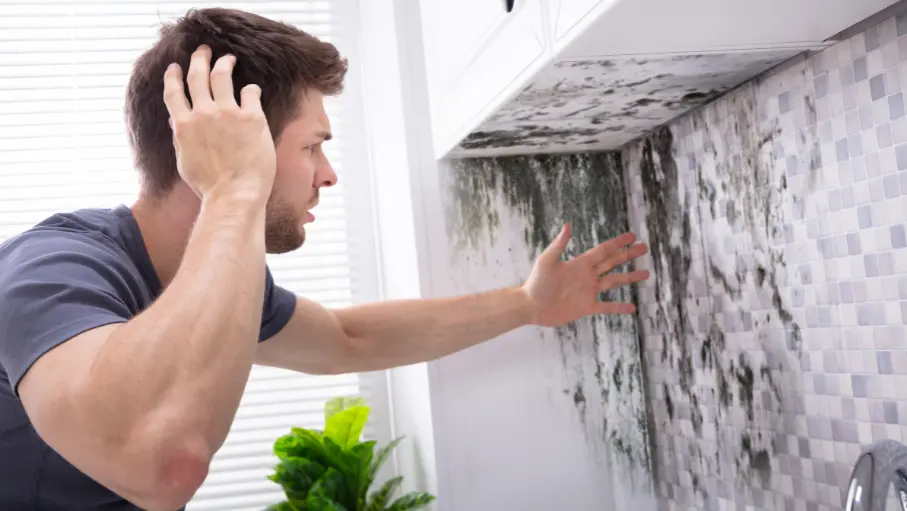Due to the city’s humid subtropical climate, mold is a persistent problem for many San Antonio homeowners. Left unchecked, mold can cause significant damage to your property and pose serious health risks to you and your family. This comprehensive guide will walk you through identifying, removing, and preventing mold in your San Antonio home, ensuring a healthier living environment for years.
Key Takeaways:
- San Antonio’s humid climate makes homes susceptible to mold growth.
- Early mold detection and prompt action are crucial for effective remediation.
- DIY removal is suitable for small areas, but professional help is needed for larger infestations.
- Controlling indoor humidity is key to preventing mold growth.
- Regular maintenance and proper ventilation can significantly reduce mold risks.
- Understanding local regulations and insurance coverage is important for mold-related issues.
Understanding Mold in San Antonio Homes
San Antonio’s warm, humid climate creates an ideal environment for mold growth. The most common types of mold found in local homes include Aspergillus, Penicillium, and Stachybotrys (also known as black mold). These fungi thrive in damp, dark areas with poor ventilation.
The city’s high humidity levels, particularly during summer, contribute significantly to mold problems. When indoor humidity rises above 60%, it creates perfect conditions for mold spores to settle and grow. Additionally, San Antonio’s occasional flooding events can lead to water damage, further exacerbating mold issues.
Health Risks of Mold Exposure
Mold exposure can cause various health problems, especially for individuals with pre-existing respiratory conditions, allergies, or weakened immune systems. Common symptoms of mold exposure include:
- Nasal congestion and runny nose
- Coughing and wheezing
- Eye irritation
- Skin rashes
- Headaches
- Fatigue
In severe cases, prolonged exposure to certain types of mold can lead to more serious respiratory issues and other health complications.
Identifying Mold in Your Home
Detecting mold early is crucial for effective remediation. Here are some signs to look out for:
Visual Signs:
- Black, green, or white spots on walls, ceilings, or floors
- Discoloration or water stains
- Peeling or bubbling paint
Hidden Mold:
Mold often grows in concealed areas. Check these spots regularly:
- Behind wallpaper or drywall
- Under carpets or floorboards
- Inside air conditioning units
- In attics and crawl spaces
Mold Testing:
While DIY mold testing kits are available, they often provide inconclusive results. For accurate detection, especially if you suspect hidden mold, it’s best to hire a professional mold inspector.
DIY Mold Removal Techniques
You can attempt removal for small mold infestations (less than 10 square feet). However, always prioritize safety:
- Wear protective gear: N95 respirator mask, gloves, and goggles.
- Seal off the affected area to prevent spore spread.
- Remove any porous materials with visible mold growth (e.g., drywall, carpeting).
- Clean non-porous surfaces with a mixture of water and detergent.
- Dry the area thoroughly using fans and dehumidifiers.
For stubborn mold, 1 cup of bleach per gallon of water can be effective on non-porous surfaces. Never mix bleach with ammonia or other cleaning products.
Professional Mold Remediation
For larger infestations or if you have health concerns, it’s crucial to hire professional mold remediation services. Experts recommend professional help when:
- The mold covers more than 10 square feet
- There’s mold in your HVAC system
- The mold is caused by contaminated water (e.g., sewage)
- You or family members experience mold-related health issues
Professional mold remediation typically involves:
- Inspection and assessment of the mold problem
- Containment of the affected area
- Air filtration to capture mold spores
- Removal of mold-infested materials
- Cleaning and disinfecting
- Restoration of affected areas
When choosing a mold remediation company in San Antonio, look for:
- Proper licensing and insurance
- Experience in mold remediation
- Positive customer reviews
- Clear, detailed estimates
The cost of professional mold removal in San Antonio can range from $500 for small areas to $6,000 or more for extensive infestations.
Preventing Future Mold Growth
Preventing mold is often more accessible and more cost-effective than removing it. Here are some key strategies:
Control Humidity:
- Use dehumidifiers in damp areas
- Aim to keep indoor humidity below 60%
- Run exhaust fans in bathrooms and kitchens
Improve Ventilation:
- Open windows when weather permits
- Use ceiling fans to circulate air
- Ensure proper attic ventilation
Regular Maintenance:
- Fix leaks promptly
- Clean and dry any water-damaged areas within 24-48 hours
- Regularly clean and maintain gutters and downspouts
Use Mold-Resistant Products:
- When renovating, choose mold-resistant drywall and paints
- Use mold inhibitors in paints before application
San Antonio-Specific Mold Prevention Strategies
Given San Antonio’s unique climate, consider these additional measures:
Summer Humidity Management:
- Use your air conditioning system to help control indoor humidity
- Consider a whole-house dehumidifier for severe humidity issues
Flood Preparation:
- Elevate items in flood-prone areas of your home
- Install backflow valves on sewer and septic tank lines
- Consider applying waterproof sealants to walls in basements or crawl spaces
HVAC Considerations:
- Schedule regular HVAC maintenance to prevent condensation issues
- Use high-quality air filters and change them regularly
- Consider installing UV lights in your HVAC system to kill mold spores
Legal and Insurance Considerations
While Texas doesn’t have specific mold regulations for residences, the Texas Department of Licensing and Regulation oversees mold assessors and remediators. It’s advisable to use licensed professionals for large-scale remediation.
Regarding insurance, standard homeowners policies in Texas typically don’t cover mold damage. However, your policy may cover mold remediation if the mold results from a covered peril (like a burst pipe). It’s essential to review your policy and consider additional coverage if needed.
For renters, landlords are generally responsible for mold remediation if it’s caused by structural issues or their failure to address water damage promptly. However, tenants may be liable if their actions lead to mold growth.
Long-term Health and Home Protection
To ensure ongoing protection against mold:
Monitor Regularly:
- Conduct visual inspections of your home quarterly
- Pay special attention to areas prone to moisture
Improve Air Quality:
- Use HEPA air purifiers to remove mold spores from the air
- Ensure proper filtration in your HVAC system
Build Mold Resistance:
When building or renovating, consider:
- Using mold-resistant building materials
- Installing proper vapor barriers
- Ensuring adequate drainage around your home’s foundation
By following these guidelines, you can effectively manage and prevent mold issues in your San Antonio home. Remember, the key to mold control is moisture control. Addressing water issues promptly and maintaining proper humidity levels can create a healthier living environment for you and your family.
Mold problems can be challenging but manageable with the proper knowledge and approach. Prompt action is crucial, whether tackling a minor mold issue yourself or calling in professionals for a more significant infestation. By staying vigilant and implementing preventive measures, you can protect your San Antonio home from the damaging effects of mold and ensure a healthier living space for years to come.
FAQs
Q: How quickly can mold grow in a San Antonio home?
A: In ideal conditions (high humidity and warmth), mold can start growing within 24-48 hours. San Antonio’s climate often provides these conditions, making prompt action crucial in addressing water damage or high humidity issues.
Q: Can I use bleach to kill all types of mold?
A: While bleach can be effective on non-porous surfaces, it’s not recommended for all mold types or surfaces. Professional remediation is often more effective and safer for porous materials or extensive mold growth.
Q: How can I prevent mold growth in my air conditioning system?
A: Regularly maintain your AC system, including changing filters, cleaning ducts, and ensuring proper drainage. Keep indoor humidity below 60%, and consider using UV lights in your HVAC system to kill mold spores.
Q: Is black mold more dangerous than other types of mold?
A: While black mold (Stachybotrys chartarum) is often associated with severe health issues, all molds can potentially cause health problems. It’s important to address mold growth, regardless of color or type.
Q: How much does professional mold remediation typically cost in San Antonio?
A: Costs can vary widely depending on the extent of the mold problem. Small areas cost $500-$1,000, while extensive infestations could run $6,000 or more. Always get detailed estimates from licensed professionals.










